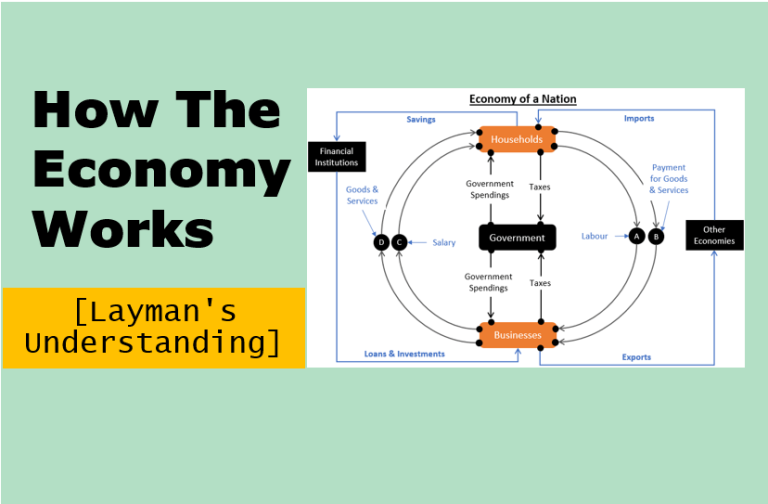Hey everyone, I recently heard a conversation featuring Saurabh Mukherjea, the founder and CIO of Marcellus Investment Managers. He was alongside students from NMIMS on NDTV Profit. He was called to discuss on the upcoming 2025 budget. Basically Saurabh was called to share his views on the implications of the budget for investors like you and me. I found that program interesting and hence I though to blog about it for my readers.
Sohrab, who started his own investment journey in his 20s without prior knowledge, delivered a refreshingly candid and practical perspective. He emphasized that understanding the budget is a fantastic learning opportunity about the Indian economy.
But he also cautioned against treating the budget day as a short-term trading event. I also head another guest on CNBCTV18, Samir Arora of Helios Capital, who agreed that in the past years, the Budget day actually used to see a actually a major trading activity.
Saurabh Mukherjea emphasised to the young audience that, Budget is not about predicting the winners and losers before the budget. But rather, it is about understanding the state of the nation after the budget announcement and then adjusting our investment strategy accordingly.
Forget the Crystal Ball: The Budget as a Thermometer, Not a Trading Tip
Saurabh Mukherjea was clear: event-based investing, whether it’s around the budget, monsoons, or elections, is inherently risky. Trying to time the market based on these events is more akin to a hobby than a reliable investment strategy. Why? Because even if you make money, you likely won’t know why you made it. Was it your brilliant budget prediction, or some other global market force at play?
His key point resonated deeply with me: use the budget to understand the state of the country and validate (or invalidate) your existing investment thesis.
Imagine this: you believe the Indian economy is entering a cyclical downturn. This is your ‘mental model’. Traditionally, in a down cycle, defensive sectors like IT, Pharma, and FMCG tend to perform relatively well.
The budget, with its discussions on tax collections, economic surveys, and commentary from the Finance Minister, offers data points to either support or refute your initial assumption (about a downturn). If the budget reinforces your belief in a downturn, you can confidently increase your allocation to these defensive sectors.
Personally, I think this is great advice. The budget can be a catalyst, but it shouldn’t be the sole reason for your investment decisions.
Union budget is a piece of our investment puzzle, not the entire picture.
From Vote Banks to Investment Banks: Following the Political Wind
One of the most insightful points Saurabh made was about the changing political picture and its impact on investment strategies. He highlighted that a significant portion of India’s income taxes comes from a relatively small segment of the population. These are people who are earning between Rs.5 lakhs and Rs.1 crore per annum. However, the vast majority of the population, those earning less than Rs.5 lakhs, are the key vote banks.
This realization, according to Saurabh, will likely drive government policies in the coming years. The focus will be on providing benefits, freebies, and subsidies to this lower-income segment. As investors, we need to recognize this shift and adapt our strategies accordingly.
What does this mean in practical terms? It means shifting away from a purely infrastructure-focused investment approach. Why? Because government spending might get diverted towards companies that cater to the needs and aspirations of rural and non-urban India. Think tractors, fertilizers, pesticides, and even dairy products. Saurabh also made a very specific reference to Marcellus, which has been investing in companies like Escorts Kubota and Godrej Agrovet.
I found this particularly interesting, as it highlights the interrelation between politics, economics, and investment.
We can’t ignore the political realities of a nation when making long-term investment decisions.
Export or Expire: Riding the Global Wave
Another crucial takeaway was the importance of export-oriented sectors in a potentially slowing economy.
Saurabh emphasized that as domestic consumption faces challenges, sectors like IT and Pharma, which generate a significant portion of their revenue from exports, become more attractive.
He also touched upon an intriguing idea: diversifying your portfolio by investing in the US market. He explained that the US and Indian markets have historically shown a low correlation, meaning that when one struggles, the other tends to perform well. This provides a natural hedge against market volatility.
“Investing in global markets can seem daunting, especially when you think about the complexities of opening foreign brokerage accounts, dealing with international taxes, and navigating different regulatory environments. However, developments like GIFT (Gujarat International Finance Tec-City) City are making it relatively more accessible for Indian investors to participate in global markets.
This is something I’ve been personally researching. The rupee’s depreciation against the dollar adds another layer of potential returns to dollar-denominated investments. Plus, exposure to global tech and innovation is something the Indian market simply can’t fully replicate. You can also read about the Indian Rupee’s fall in Year 2024 and What’s Ahead in 2025.
The Consumption Conundrum: A Tale of Two India
Saurabh and the panel also delved into the complex issue of consumption.
They acknowledged a slowdown in urban consumption, driven by factors like high debt levels and slower job creation among the middle class. On the other hand, rural consumption is showing signs of recovery. Also read on FMCG companies betting on premiumization.
This “tale of two India” presents a challenge for investors.
FMCG companies are pushing smaller, cheaper “bite-sized” packs to boost sales, especially in rural areas where affordability is key. While this may increase the number of items sold (top-line volume), it doesn’t necessarily translate to higher profits. Bigger packs offer better profit margins. Since urban consumption is slowing, FMCG companies are struggling to sell those larger, more profitable packs. Because FMCG companies themselves are openly admitting these challenges, Saurabh suggests being careful about investing in them right now, as their stock prices (valuations) might be too high considering their profit struggles.
His recommendation was to lean towards export-oriented companies and rural-centric themes while carefully considering the financial health of private sector banks.
With rising loan defaults (NPAs) expected, especially in unsecured lending and credit cards, the financial health of banks is crucial. Some private sector banks, historically conservative in their lending practices, are better positioned to weather this storm. Saurabh says, look for banks with strong deposit growth and low NPA ratios. These banks, though perhaps overlooked in recent market rallies, could shine as the economic environment tightens and quality becomes paramount.
Looking Ahead
So, what are the key themes and opportunities for young investors navigating the 2025 budget and beyond?
Here’s my summary based on the conversation and my own analysis:
- Think Long-Term: The budget is a tool for understanding the economic landscape, not a get-rich-quick scheme.
- Follow the Money: Understand where the government is likely to focus its spending (rural India, social benefits) and invest accordingly.
- Go Global (Responsibly): Explore diversification opportunities in the US and other developed markets.
- Embrace Export-Oriented Sectors: IT and Pharma offer stability in a potentially volatile domestic environment.
- Be Selective with Consumption: Don’t blindly chase consumption plays; focus on companies that cater to the recovering rural market.
- Consider Private Sector Banks: High-quality banks with strong fundamentals can offer resilience in a challenging economic climate.
- Beware of High Valuations: Don’t get caught up in hype; look for undervalued sectors and companies with strong fundamentals.
- Reskilling is Key: With automation and AI on the rise, focus on developing skills that are relevant in the modern economy.
- Don’t be afraid to be contrarian: Always remember that opportunities often lie in undervalued sectors.
The budget isn’t just a document filled with numbers; it’s a roadmap for the Indian economy. By understanding its nuances and adapting our investment strategies accordingly, we can position ourselves for long-term success. Remember, investing is a marathon, not a sprint. And as young investors, we have the time and agility to adapt to the changing tides of the market.
Disclaimer: I am not a financial advisor, and this is not financial advice. Please consult with a qualified financial advisor before making any investment decisions. Aur haan, market mein risk toh hota hi hai! If you want you can join my email newsletter group for free.





